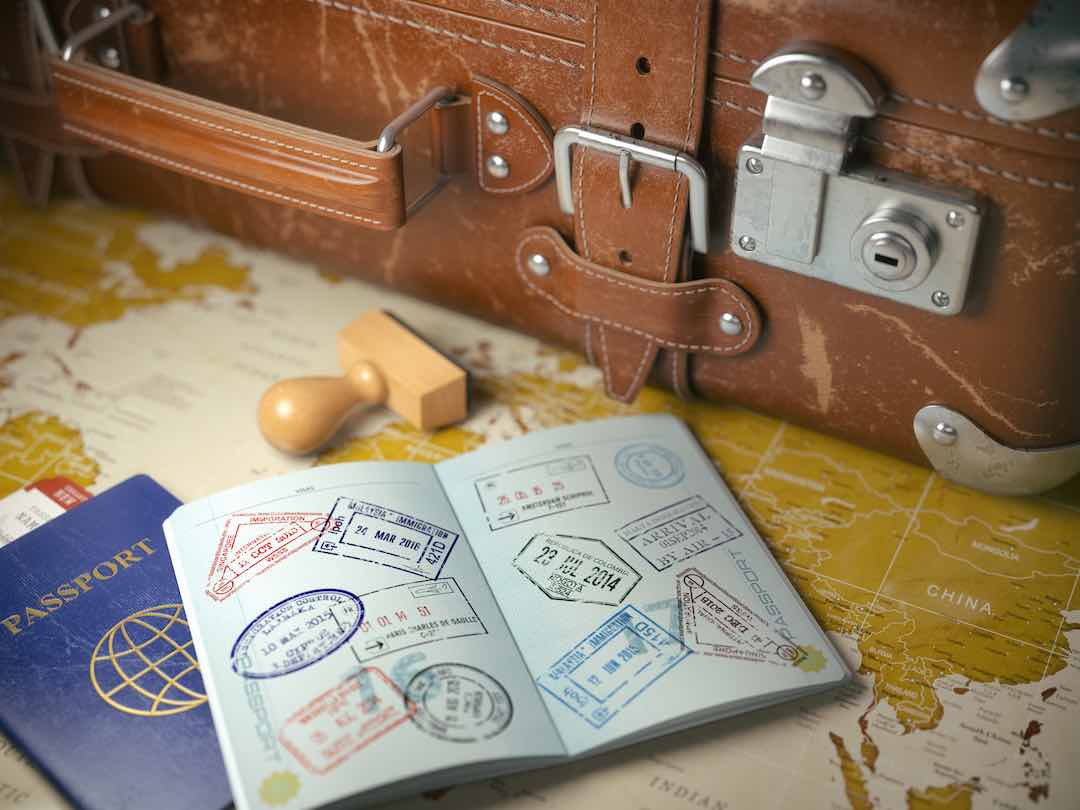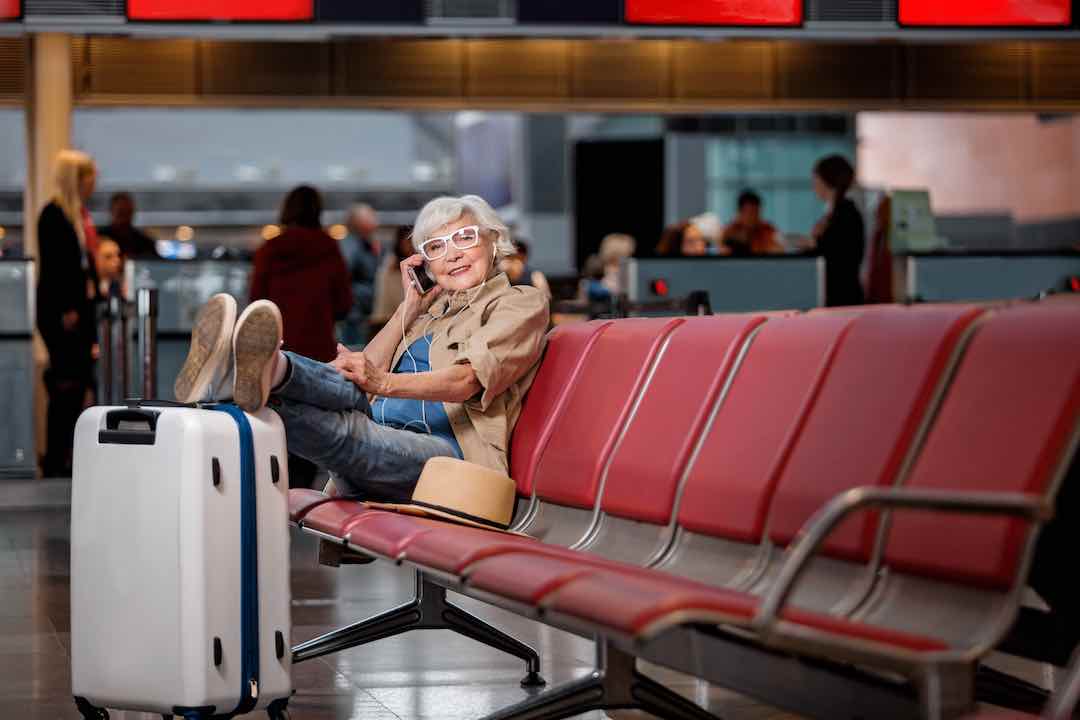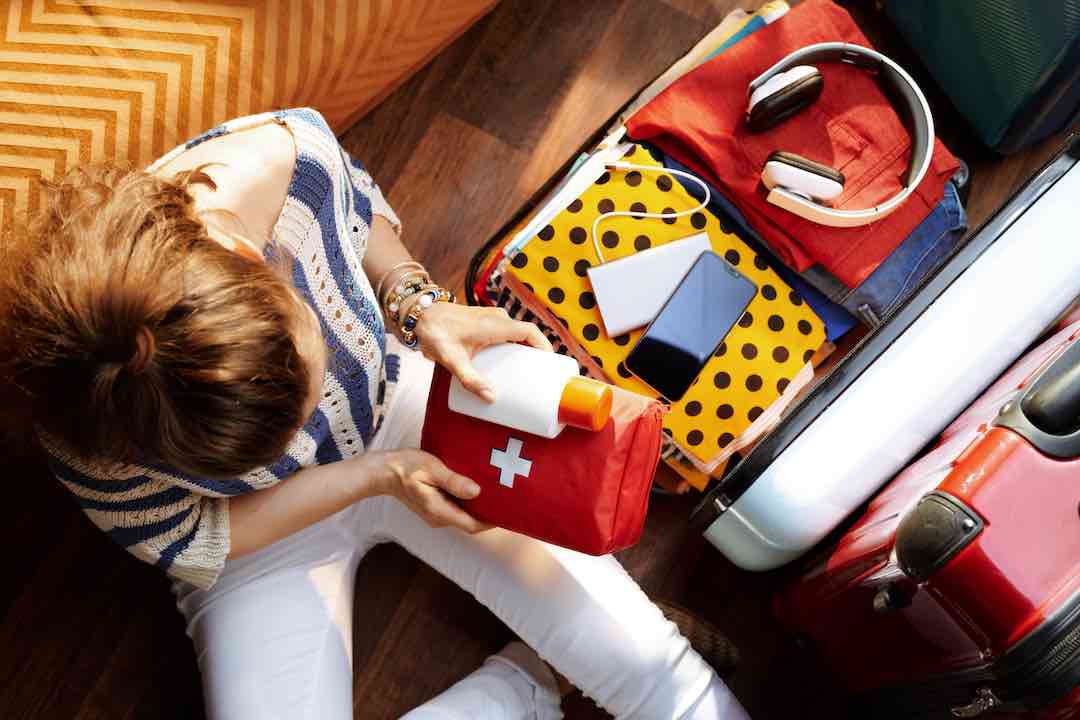Traveling around the world is always great fun, no matter your age. For seniors like you, such treks are just reward for all the hard work and sacrifices expended during your lifetime. Visiting iconic venues, experiencing new cultures, and tasting exotic cuisine are exciting ways to enjoy one’s golden years. To ensure you survive those extensive travels, however, it’s just as important to know what to pack for the trip as it is to plan an itinerary. That’s why we’ve identified eight must-have travel items to add to a pre-trip shopping list to guarantee you have a comfortable and safe excursion.
Before shopping for those must-have travel items, however, it will be invaluable to review a few simple but important travel tips. Keeping these details at top of mind will help you avoid the trials and tribulations unprepared vacationers often experience. All travel experts agree that prior planning prevents poor performance.
Some Travel Tips
Plan trips contingent on your budget.
“Shoulder Season” in Europe is from April through mid-June and from September through October. “Peak Season” is from mid-June through August. The “Off Season” is from November through March. A word to the wise: “Off Season” is so named for good reason; cheaper but cold and rainy.
Ensure your Passport does not expire within six months from the start of your trip.
We recommend having at least eight months left because some countries are stricter than others. Imagine what it would feel like getting stuck in Nay Pyi Taw airport if a Myanmar customs official says, “Many pardons, Mr. Smith, but your papers are not in order.” It’s also smart to make copies of your Passport just in case you lose it.
Check with the Consulates
Check with the Consulates of the countries you’ll visit to confirm which travel documents are needed aside from a Passport. Some countries require a Visa, security certificates, or special vaccinations. While visiting the European Union mitigates the need for complex travel documents, Russia, China, and various Middle East nations have a bevy of international travel regulations.
Always purchase travel insurance even if you feel it’s too expensive.
If anything goes wrong – and things can often go wrong – that insurance payment will look dirt cheap in comparison to spending all that cash for extra hotel stays and unscheduled transportation or medical expenses. Your credit card company, travel agent, or travel websites offer insurance packages.
Confirm local driver’s license requirements if you plan on renting a car.
Most car rental companies accept standard licenses from most European countries, the U.S., and Canada.
Consult your cell phone provider
Consult your cell phone provider about international roaming rates, data charges, and wireless device options to ensure your phone connects to the prevailing networks. Many countries now inspect electronic devices at custom stations; those procedures have intensified for security reasons. Laptops and tablets are now required to be included in checked baggage if you’re flying from certain countries. And don’t forget your phone charger.
Travel light
Travel light and use only one mid-size check-in luggage and one small carryon bag per person. Dragging heavy bags around airports, baggage claim, and hotel lobbies is not fun. When traveling as a couple, we recommend against consolidating everything into one large suitcase because it will be a logistical nightmare if that piece gets lost in transit. Since you’ll be too busy to play much golf, rent clubs at the course if the urge strikes.
Convert $100 into the local currency when you arrive.
Cash is useful when buying small items, snacks or tipping hotel bellhops and taxis. While ATMs are plentiful everywhere, use credit cards as much as possible for larger purchases (hotels, meals, entertainment, etc.) since exchange rates are calculated automatically.
Print personal contact cards.
Since you will certainly meet several great people during the trip, it makes sense to give a few of them your contact information. Meeting and making new friends are integral to traveling aside from sightseeing and sampling the local fare. Get some cards printed with your name, cell phone number, and email address. That’s a sure-fire way to create long-lasting friendships from across the seas. Also, keep a small notebook and pen handy at all times to record important names and numbers on the fly.
Create a short departure checklist
This list will prompt you to double-check critical items before leaving the hotel. Review it and be secure in the knowledge that you have everything. That’s far better than realizing the phone charger is unaccounted for when you’re halfway to the airport or your next destination.
Now let’s identify those eight must-have items seniors should have when traveling. You can decide which brands to purchase based on your budget, so scour the net for the best prices. Just remember that adage “You get what you pay for.” Buying the cheapest item is not always the best item in the long run. Since you don’t want something to break during the trip, think quality and value, not price. This is a simple list because there is little value in dragging around too much stuff that you have to manage or might lose.
8 Must-Have Travel Items for Seniors
1. Manicure/Hygiene/Medical Kit
While this item might seem trivial at first glance, keeping all your personal hygiene items in one toiletry kit will simplify your life when traveling. Nail clippers, small scissors, toothbrush, small mirror, band aids, pills, lotions, etc. are obvious day-to-day requirements you’ll need to manage. While they might look nice when new, don’t get those pretty leather kits/bags because water and lotions tend to degrade them. Kits made of synthetic material are more practical and durable. Prepare to spend $25 for good ones.
2. Compression Travel Socks
Traveling includes long periods sitting on planes, trains, and automobiles. That is especially difficult for seniors because our legs and feet retain fluids, causing them to swell. Compression socks or stockings, however, mitigate this problem by gently squeezing your legs to help the veins and leg muscles transfer blood efficiently during prolonged inactivity. Good compression socks feel nice and snug on calf muscles, so be aware of getting ones that are too tight. In addition, a water-resistant pair of comfortable walking shoes are worth their weight in gold.
3. Small Carryon Case
Modern carryon cases are exceptional in many respects because they’re designed with wheels, telescoping handles, and built-in phone chargers. They’re also durable, lightweight, and can easily fit into the overhead bins on most commercial airplanes. A wide assortment of personal items can be stored in the case without restricting your movement around the airport and hotels, etc. Get a mid-sized check-in suitcase for other items and clothing.
4. Electric Adapter Kit
This is an essential item if you’ll be traveling with a computer, phone charger, camera, that new carryon case, and other electrical devices. Electrical wall outlets can differ from country-to-country, even within the EU. That also applies to most of Asia, the Middle East, and Africa. Good adaptor kits have at least three types of plugins to accommodate 95% of the civilized world’s electrical networks. If you can’t connect to an outlet with one of these modern adaptors, you’re probably staying in some tent next to an oasis in the Sahara.
5. Handheld Translators
While it can be a lot of fun trying to communicate with the locals most of the time, there are instances when it can be troublesome. That’s why investing in a translator can be invaluable on certain occasions. These clever devices can translate more than 25 languages, and most operate in real-time (or at least very fast) depending on the complexity of the language and strength of the local network connectivity. While some of the translation apps for cell phones are workable, nothing beats a device that’s designed for and dedicated to that single task. These devices cost $50-$150, so take a little time to investigate.
6. Compact Travel Camera
If you just want to take pics for your edification and memories, use that cell phone camera; nothing wrong with that. But if you want to take excellent and memorable photographs, get a compact camera. Modern travel cameras are pocket-sized yet jam-packed with outstanding auto-features that enhance both indoor and outdoor scenes that stand far above cell phone pics. They include all-in-one telephoto, wide-angle, and close up lenses and various picture enhancements for night and day shots. Compact cameras are light and relatively cheap with a price range of $200 – $275. That is relatively cheap when compared to those $1,000 cell phones (iPhone X and Galaxy 10) which provide similar features.
7. Noise Canceling Earplugs
Wow, technology has come a long way for those old-fashioned earplugs. Not only do these new fandangle earplugs allow you to listen to audio/video content, but they also let you activate the noise canceling feature that suppresses 90% of the steady buzz associated with airplanes, trains, and cars traveling on highways. This will certainly improve your chances for catching some well-deserved ZZZs during those long flights. These items retail for $30-$50,
8. RFID Travel Vest
Last but not least, seniors should purchase a light-weight travel vest to help them keep important items safe and close at hand when traveling. These washable vests have 15-20 pockets that allow you to stow passports, room keys, wallets, cellphones, small tablets, pills, pens, etc. In addition, the Radio Frequency Identification (RFID) feature repels WI-FI hackers who roam the streets, shops, and restaurants trying to steal passwords and credit card numbers. Such vests are priced around $100-$175.
Profitez de votre voyage!
Michael Hervey is a freelance writer who lives in Los Gatos, California.
He graduated from Penn State University with a B.A. in Political Science and worked in a Wall Street bank before setting off on a life of discovery and adventure. He joined the United States Marines, attained the rank of Captain, was a fixed-wing/helicopter pilot, and a Squadron Legal Officer. He also held senior sales positions in the semiconductor, software, and wireless industries
Harold has written seven (7) eBooks on travel, food, and business plus numerous articles and blogs about lifestyles, current events, and politics.











